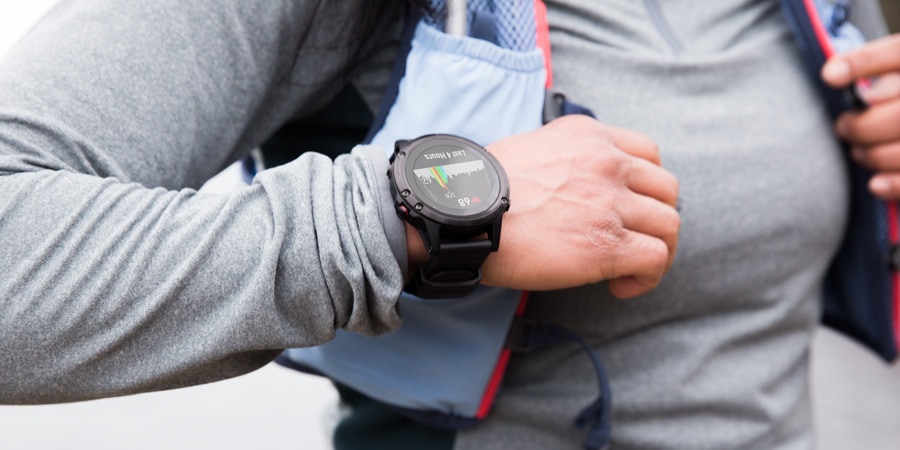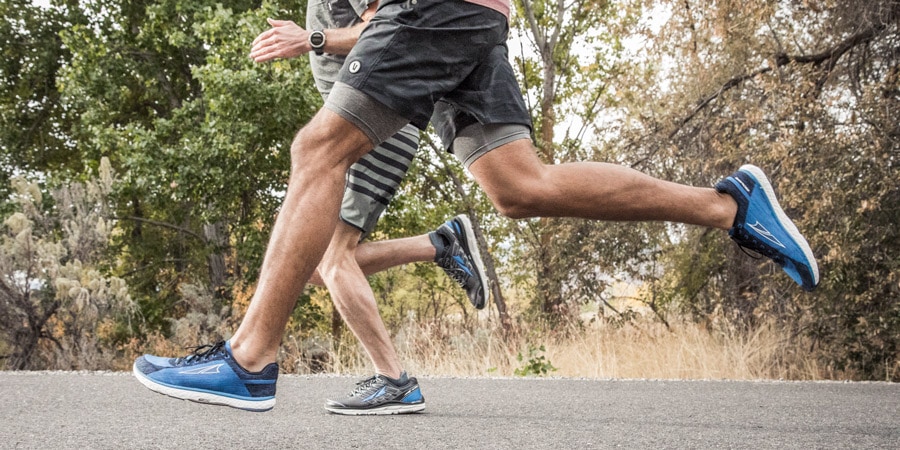Whether you're a runner, a hard-training athlete or someone simply in pursuit of better fitness, VO2 max is a stat to understand and embrace. This article will offer basics on measuring it, as well as training tips on how to improve it. (Note that your first step, as it is with any training program, is, of course, to consult your physician.)
What is VO2 max?
VO2 max is the maximum volume (V) of oxygen (O2) your body can process. A VO2 max score is a little like horsepower in a car—it's a measure of the capacity your body (engine) has to use oxygen when exercising. If you have a high VO2 max, you have a big engine. VO2 max has three primary components:
- Lung capacity and heart volume: The more oxygen your lungs can intake and the more oxygenated blood your heart can pump, the higher your VO2 score.
- Capillary delivery: The more oxygenated blood your circulatory system can transport to your muscles, the higher your VO2 score.
- Muscle efficiency: The more your muscles can extract and use oxygen from your blood, the higher your VO2 score.
Knowing your current VO2 max is key to understanding and improving your fitness. It serves as a baseline measurement of your fitness level today, and it can inform your training to improve your VO2 max readings in the future. You won't automatically run, ride or ski faster if you increase your VO2 max. But raising your score will make it easier to go faster and to sustain a given pace in any aerobic activity you do.
How to Measure VO2 Max

VO2 max is the number of milliliters of oxygen you use per kilogram of body weight in one minute (ml/kg/min), though you often see it stated simply as a single number, sans that unit of measurement.
World-class athletes have been doing VO2 max testing in laboratories for years, and that's still an option—it's also the gold standard for accuracy. You can get a VO2 max test done at sports medicine facilities, or medical labs that also do stress tests to evaluate heart health. If you're not seeing a cardiologist or training at an Olympic-caliber training facility (yet), you have other options:
- With your fitness tracker: Some fitness devices provide VO2 max readings. Many trackers also offer other sophisticated physiological measurements. Note that a few brands have their own terms for VO2 max and it takes careful reading of their product info to suss that out. (For help in selecting one, read How to Choose a Fitness Tracker.)
- With an online calculator: Because VO2 max has been studied for years, all sorts of algorithms have arisen that let you roughly calculate VO2 max based on basic personal data. A quick online search will reveal dozens of VO2 max calculators. One simple online VO2 max calculator was created by the Norwegian Institute of Science and Technology (NTNU), which based its results on data provided by a large population of people. It gives you both a fitness score for your age and an equivalent VO2 max number.
Range of VO2 Max Results
The chart below shows the range of VO2 max results, broken down into age groups and genders. These numbers come from the Fitness Registry and the Importance of Exercise (FRIEND), a national database of VO2 values.
VO2 Max Values by Age and Gender
| Age Group | 5th Percentile | 10th Percentile | 25th Percentile | 50th Percentile | 75th Percentile | 90th Percentile | 95th Percentile |
|---|---|---|---|---|---|---|---|
| Men | |||||||
| 20-29 | 29.0 | 32.1 | 40.1 | 48.0 | 55.2 | 61.8 | 66.3 |
| 30-39 | 27.2 | 30.2 | 35.9 | 42.4 | 49.2 | 56.5 | 59.8 |
| 40-49 | 24.2 | 26.8 | 31.9 | 37.8 | 45.0 | 52.1 | 55.6 |
| 50-59 | 20.9 | 22.8 | 27.1 | 32.6 | 39.7 | 45.6 | 50.7 |
| 60-69 | 17.4 | 19.8 | 23.7 | 28.2 | 34.5 | 40.3 | 43.0 |
| 70-79 | 16.3 | 17.1 | 20.4 | 24.4 | 30.4 | 36.6 | 39.7 |
| Women | |||||||
| 20-29 | 21.7 | 23.9 | 30.5 | 37.6 | 44.7 | 51.3 | 56.0 |
| 30-39 | 19.0 | 20.9 | 25.3 | 30.2 | 36.1 | 41.4 | 45.8 |
| 40-49 | 17.0 | 18.8 | 22.1 | 26.7 | 32.4 | 38.4 | 41.7 |
| 50-59 | 16.0 | 17.3 | 19.9 | 23.4 | 27.6 | 32.0 | 35.9 |
| 60-69 | 13.4 | 14.6 | 17.2 | 20.0 | 23.8 | 27.0 | 29.4 |
| 70-79 | 13.1 | 13.6 | 15.6 | 18.3 | 20.8 | 23.1 | 24.1 |
How to Improve Your VO2 Max

It turns out that one of the most effective ways to raise your VO2 max level is to train at or near your body's VO2 max level of intensity, and running workouts are a great way to do that. Below is a simple way to estimate your VO2 max running pace, which you can then incorporate into your training plans.
How to determine your VO2 max running pace: A moderately fit person can sustain a VO2 max pace for roughly 6 to 8 minutes. So, one way to determine your max VO2 pace is to warm up, then run for 8 minutes at the maximum intensity level you can sustain for 8 minutes. If, for simplicity's sake, you ran one mile, then your VO2 max training pace is 8 minutes/mile.
Sample Training Plans to Improve VO2 Max
Long interval workout to improve VO2 max: Training at or near your VO2 max pace improves your body's ability to process a greater volume of oxygen. Below is an example training routine to do that:
20-minute interval workout
- 3 minutes at VO2 max pace
- 2 minutes of easy running
- Repeat 4 times
Tempo run to improve VO2 max: Training at about 85 percent of your VO2 max pace improves your muscles' ability to process oxygenated blood. Simply multiply your VO2 max pace by 85 percent (.85), then use that pace for a 20-minute run.
These are just two examples of types of training to improve your VO2 max. Because improving your VO2 max also enhances your ability to lower your race times, consider incorporating these two workouts into your race training schedule. If you're not training for a race, then you can simply add these sessions to your general workout routine.

